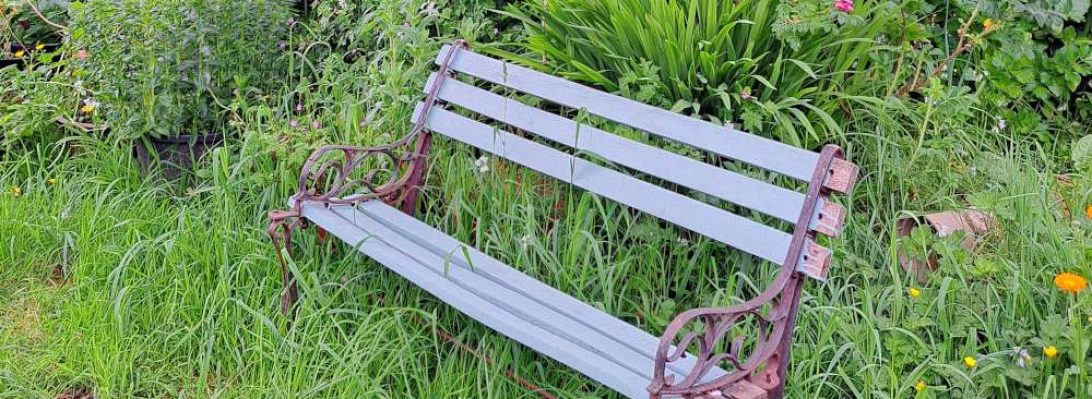For the past three weeks we have both been working in the garden. I am told that it was an extraordinary wet spring and we have had a fair bit of rain since we came home too. We lost one of our trees, a pine tree that stood at the back of the garden where water is inclined to collect. Ian has found that the roots were totally rotten so no wonder that the storm caught and tumbled the tree.
And the garden was totally overgrown as would be expected, Ian soon had the little bit of grass in the middle of the raised beds strimmed. and the grass that was invading the path cut away. While I started with the beds, some of which were full of Ranunculaceae with very tough roots systems. The whole garden was also covered in Three Cornered Leeks with their lovely white flowers as usual. One of the days I had some help from two of my small grand children and we sure had a day of fun, and yet we achieved a lot.
To our delight we found all sorts of vegetables that had survived the long winter rains and storms. And then out of the blue I received an email from FutureLearn (https://www.futurelearn.com/) to remind me that a course I had registered for had started, and this has been occupying my time totally these past few weeks. The course is called – Citizen Science: Living Soils, Growing Food – and is run by the University of Dundee, Scotland. It is immensely interesting and I have been enjoying every single minute of it, and learnt such a lot. I had decided even last year that it is my soil that I should be putting time and effort into, and educate myself about what it needs, and running tests to see what it may be lacking, and what to do about it. Anyway, all this the course taught me and more. I also learnt about the C3 and C4 food types and how the increase in CO2 is affecting the nutrients of our vegetables and fruits, and the relationship between nutrient depletion in our soils, and less nutritious foods. Something I knew very little about, and found interesting.
Anyway, together with Grow Observatory (https://growobservatory.org/) students were invited to take part in a communal worldwide experiment. (This was for certain areas but not my area in Ireland) so I did not take part in it. However, the Citizen Science was also running an experiment as well as inviting us to ask our own question and in that case run our own experiment, and so I asked myself the question: What will give a better crop? If I use compost from the garden compost bin to improve both the fertility and the texture of my clay soil? Or if I use a combination of leaf mould and organic seaweed liquid? The course took us right through all the factors that are important to carry out our tests with hypothesis, controls, variables, data taking, analysis, and so on. My experiment is set up, my bean plants have been sown and test kits arrived by post, I’m all set up for this experiment.
The two beds are totally ready for the experiment. One is treated with compost from the bin and the other is treated with leaf mould, and later in the experiment I wil be adding the organic seaweed fertilizer to the latter. Hedges have been cut real low to allow maximum light reaching the beds. A rain gauge is in place in both the beds to measure precipitation. And I am testing the actual consistency of the soil, though I know that it is mostly clay, has quite a bit of stones in it, and as I’ve already found out not enough organic matter. Half the beds will be planted and the other halves will be controls. Spinach is the other crop and radish also. It is going to take up time but will be lovely to eat all the produce and enjoy taking all the measurements and learn a lot about my soil.
Not sure where all this is going to take me but I am sure enjoying it all.
I came across this lovely quote from one of the books by Jan Shellenberger. that’s also where I took my post title from: I quote:
“Our most important job as vegetable gardeners is to feed and sustain soil life, often called the soil food web, beginning with the microbes. If we do this, our plants will thrive, we’ll grow nutritious, healthy food, and our soil conditions will get better each year. This is what is meant by the adage ”Feed the soil not the plants.”

And the view from our back garden, the minute the hedge gets clipped – I know I need to work on it a bit more – behind that rocky hill lies the sea.




















